By Liana Green www.LianasKitchen.co.uk My Amazon Author Page: www.amazon.co.uk/Liana-Green www.amazon.com/Liana-Green Copyright 2017 by Liana Green All rights reserved. This book or any portion thereof may not be reproduced or used in any manner whatsoever without the express written permission of the publisher except for the use of brief quotations in a book review. DISCLAIMER Although the author and publisher have made every effort to ensure that the information in this book was correct at press time, the author and publisher do not assume and hereby disclaim any liability to any part for any loss, damage, or disruption caused by errors or omissions, whether such errors or omissions result from negligence, accident or any other cause. Contents
INTRODUCTION
Pressure cookers are currently seeing a resurge in popularity since their heyday during the 20th century. Im sure many of us born during the 70s and 80s will remember the scary sounding pressure cooker, hissing away on the stove, threatening to spurt out its contents if you went within 3 foot of it. Thankfully the current renaissance of the pressure cooker has brought about the development of electric pressure cookers, a much quieter, and more importantly, safer appliance from those of yesteryear.
Benefits of Using a Pressure Cooker Although using a pressure cooker for the first time may seem daunting and overwhelming, once you get used to this method of cooking, you will soon begin to appreciate the many benefits and wonder how you ever managed without it in your kitchen. - Create delicious and nutritious meals in a shorter time. - Vegetables retain more of their vitamins and nutrients when prepared in a pressure cooker. - Save on food costs. Cooking under pressure allows you to use tougher and cheaper cuts of meat. - Create a variety of meals with a versatile pressure cooker. - Create a variety of meals with a versatile pressure cooker.
You can stew, fry, boil, bake, steam and saut in a pressure cooker. - Save on appliances and cookware. A good multi cooker should mean you can replace many of your kitchen pots and gadgets, and simply use the one appliance. - Save on fuel consumption when compared to a conventional oven or stove-top - Less heat in the kitchen. A sealed pressure cooker will release minimal heat and steam. Which Pressure Cooker Should I Use? Options include the popular electric pressure cookers, often packaged up as multi-cookers with claims to do just about everything in your kitchen, aside from the washing up.
Instant Pot has led the way with multi-cookers, developing a huge following of dedicated fans. The Instant Pot is an excellent choice of electric pressure cooker, as are other brands, in particular, the Pressure King Pro. And if you prefer to stick to the traditional stove-top pressure cookers, you cant go far wrong with any models from the well known brands including Tefal, Tower, Prestige and VonShef. The Recipes in This Book All the recipes in this book have been tried and tested using an Instant Pot. However, they are suitable for all types of pressure cookers, just make sure you have read and understood any particular recommendations in the manual that came with your model. Whilst you shouldnt have any problems with the recipes in this book, on rare occasions things might not turn out quite right.
It can be something as simple as an incorrectly measured ingredient, or a different make of ingredient used. Whatever the reason, if you want any help, or have any questions, please feel free to contact me at Im more than happy to assist, and if I dont know the answer, I can usually find out! How a Pressure Cooker Works When pressure is increased the temperature at which liquid boils will increase accordingly. Because a pressure cooker is a sealed environment, the steam cannot escape as it would in a pan on the stove. The steam essentially cooks the food - which is why it is important to have adequate liquid levels in your pot. Liquid Levels I cannot stress enough how important it is to have the minimum liquid requirements in your cooker before you attempt to pressure cook anything. Without enough liquid, there wont be enough steam to reach pressure, and to stay at pressure.
The result of this could be uncooked food, and worst still, scorched food. The Instant Pot advises you have at least 1 cup of water which should be a good rule of thumb for most models (but do check with your manufacturer). The good news is, this doesnt all need to come from water alone. It can be from stock, vegetables, meats, wine etc. Pressure Cooker Lingo Quick Release (QR) When a recipe calls for a quick release, sometimes written as QR, this means you should manually bring down the pressure as soon as the cooking time has finished. On an electric pressure cooker like the Instant Pot, this involves moving the steam release handle to the venting position.
This will enable the steam to be let out until the float valve drops down. Once the float valve has dropped down you can take the lid off your pressure cooker. Always take care when using this method of release as the steam coming out will be very hot. Keep hands and other body parts out of the way. If you prefer, you can use a wooden spoon or spatula to knock the handle into the correct position. Be careful using this method on recipes with large amounts of liquid or foods high in starch.
Using the quick release method is useful when you want to stop the cooking process quickly to avoid over cooking, especially ingredients such as vegetables. Natural Release (NR) A natural release is when you leave the pressure cooker to do its thing on its own. If you dont intervene at all your machine will automatically go into this mode. Natural release usually takes anywhere from 10 minutes and upwards, depending on what ingredients and liquid levels you have inside. You can speed up the natural release process by covering the pot in a damp towel. A natural release is best used when cooking large cuts of meat to allow them adequate resting time.
It is also recommended to use this method when cooking beans and pulses. They have a tendency to foam up which could potentially escape through the steam valve and block it. A good compromise is to allow a 10 minute natural release, followed by a quick release. Pot In Pot Sometimes abbreviated to PIP, Pot In Pot basically means using another cooking pot or container within the pressure cooker pot. Usually the pot is rested on a trivet. The pot can be made out of any material that is suitable for use in an oven such as silicone, ceramic, stainless steel etc.
Sling Sometimes it can be hard lift your dish out when using the pot in pot method. Its not only awkward, its also hot. A brilliant way round this is to make your own sling. You can make it out of a tea towel or some foil. I prefer to use foil as the tea towel will get all wet and soggy. Unroll and lay out about 50cm of foil and fold it into a strip about 5cm in width.
This is what you will use to lower and lift any pot in and out of your pressure cooker;  Quick Tips - Invest in some herbs and spices . Many of the recipes in this book, in fact, in many pressure cooker recipes; you will find the need to add herbs or spices. Just a tiny dash of spice can make all the difference to an otherwise bland dish. - If you want a thicker sauce you will need to use the simmer/saut/heat function on your pressure cooker at the end of cooking, with the lid off. In some cases just 5 minutes will make all the difference. It will also enhance the flavour of your dish.
Quick Tips - Invest in some herbs and spices . Many of the recipes in this book, in fact, in many pressure cooker recipes; you will find the need to add herbs or spices. Just a tiny dash of spice can make all the difference to an otherwise bland dish. - If you want a thicker sauce you will need to use the simmer/saut/heat function on your pressure cooker at the end of cooking, with the lid off. In some cases just 5 minutes will make all the difference. It will also enhance the flavour of your dish.
If you are short on time, other options include adding cornflour, flour or stirring in some cream. - Watch how much you put in your cooker. Although there might seem to be a lot of space in your pot, dont fill it by more than two thirds full, and for recipes that include beans, grains, fruit and rice, not more than half way (they will expand as they cook). Your cooker needs enough space for the steam to circulate. Converting a Recipe Many recipes can be adapted for a pressure cooker. Recipes that need liquid or steaming when cooking are ideal for conversion.

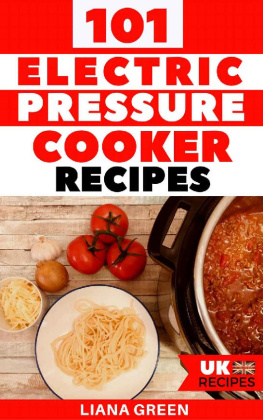
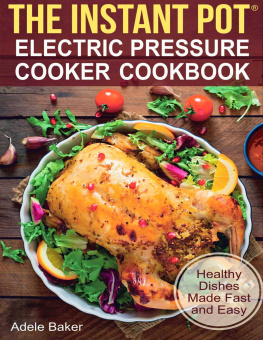

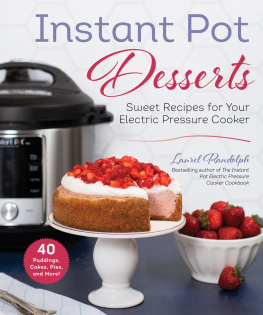
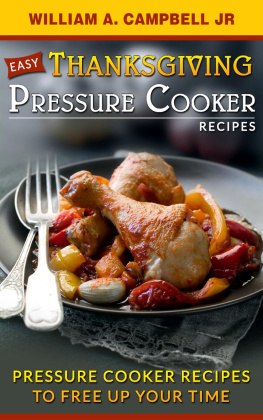

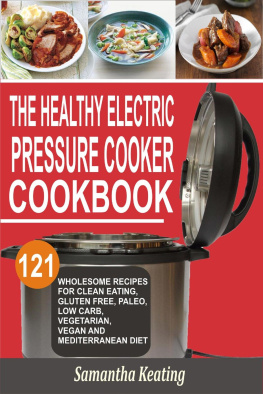
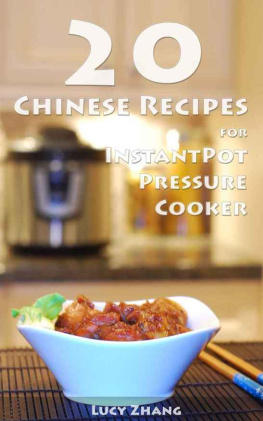


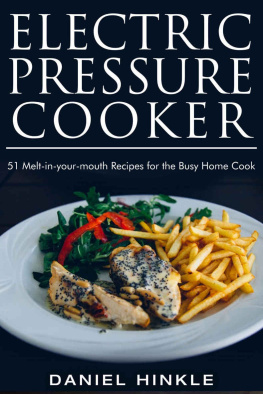
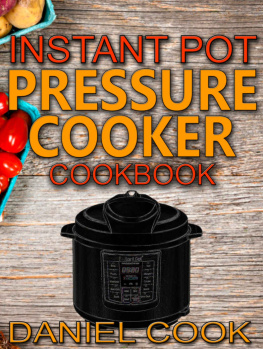

 Quick Tips - Invest in some herbs and spices . Many of the recipes in this book, in fact, in many pressure cooker recipes; you will find the need to add herbs or spices. Just a tiny dash of spice can make all the difference to an otherwise bland dish. - If you want a thicker sauce you will need to use the simmer/saut/heat function on your pressure cooker at the end of cooking, with the lid off. In some cases just 5 minutes will make all the difference. It will also enhance the flavour of your dish.
Quick Tips - Invest in some herbs and spices . Many of the recipes in this book, in fact, in many pressure cooker recipes; you will find the need to add herbs or spices. Just a tiny dash of spice can make all the difference to an otherwise bland dish. - If you want a thicker sauce you will need to use the simmer/saut/heat function on your pressure cooker at the end of cooking, with the lid off. In some cases just 5 minutes will make all the difference. It will also enhance the flavour of your dish.